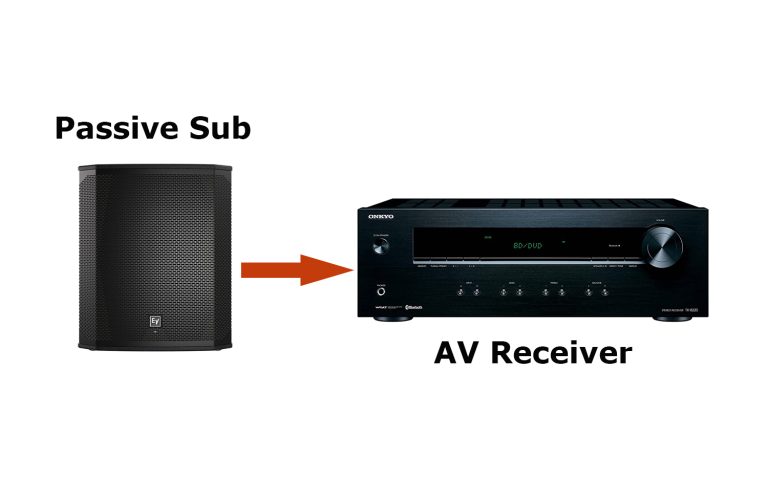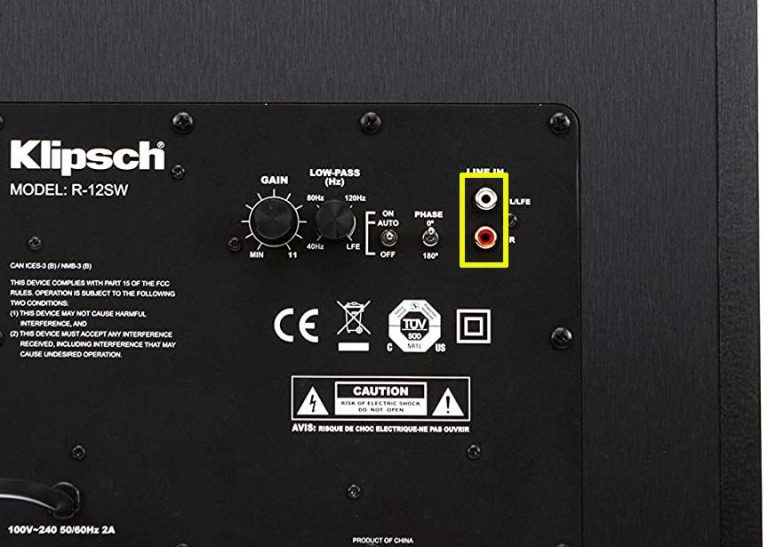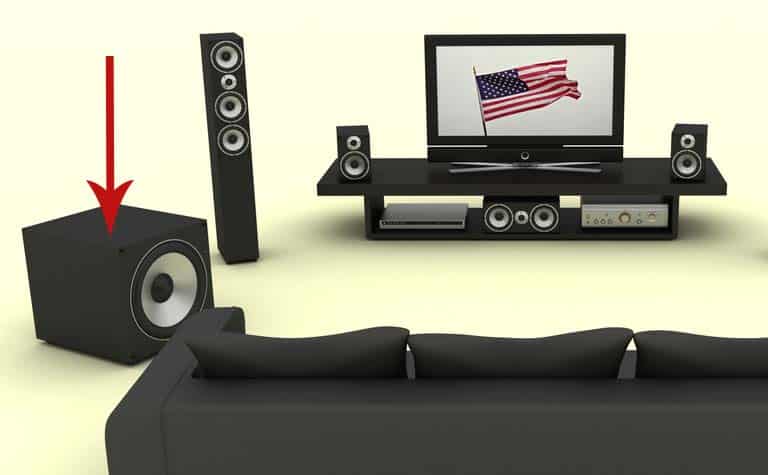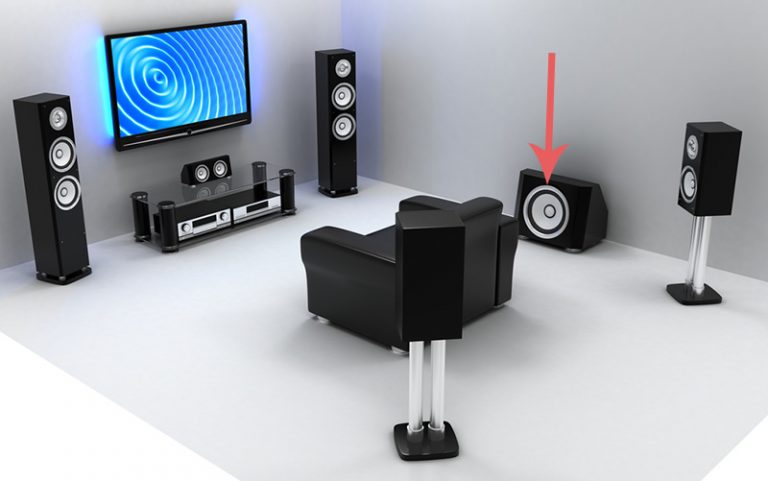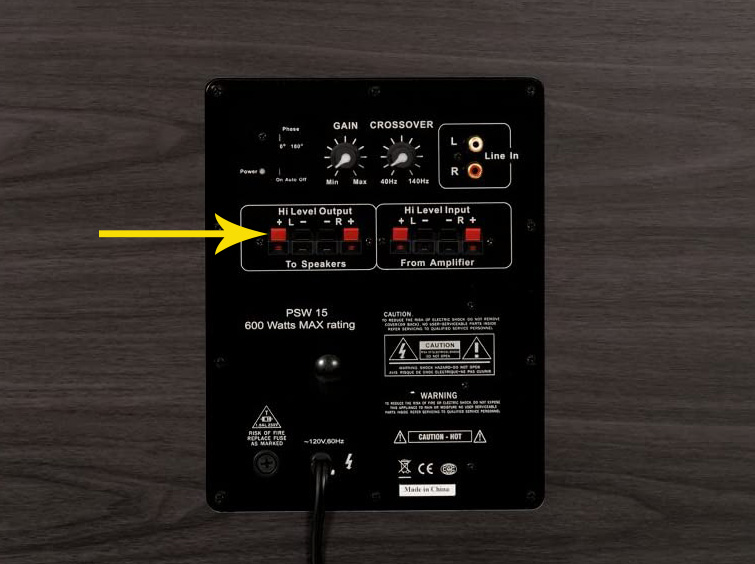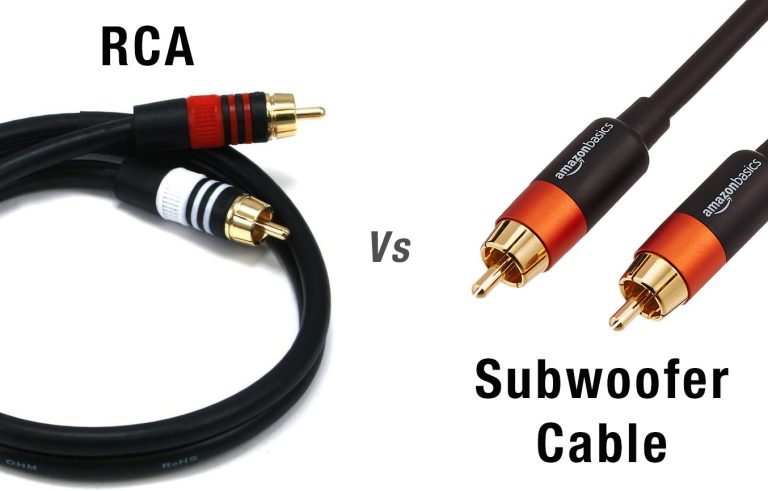Subwoofer Crossover Settings (Guide)
With subwoofers in your sound system, you can allow low frequencies to be played at their full potential. The right subwoofer crossover settings further help in creating an overall richer and balanced quality of sound.
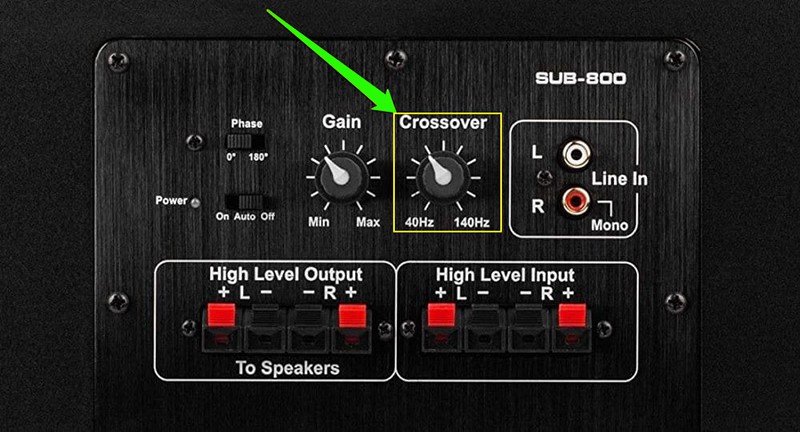
Here are a few things you need to know about setting up your subwoofer’s crossover for the optimal listening experience:
- Why are subwoofers important?
- What is a subwoofer crossover?
- How to pick the right crossover
- How to install a subwoofer crossover
- How to set your crossover frequency
If you’ve been trying to figure out how to integrate a subwoofer into your current listening system, you’re in luck.
Armed with the knowledge in this article, you’ll be listening to better bass in no time. Read on to learn more.
Also read: What Hz Is Best for Bass?
1. Why Are Subwoofers Important?
While subwoofers aren’t strictly required for an audio system to function, the addition of subwoofers and tweeters–for high and low registers, respectively–can serve not only to improve the sound quality of the music but also preserve the life of the speakers.
Any speaker has a range of audio frequencies that it’s capable of producing. Think of this as the speaker’s “comfort zone.”
Most speakers can produce some sound outside of their comfort zone, but the further away the frequency deviates from the standard, the worse the quality of sound becomes.
Low registers played through a standard speaker may sound boomy, rather than the rich fullness of bass that music lovers have come to expect from subwoofers.
When a speaker is forced to produce registers out of its frequency range at too high a volume, however, you run the risk of blowing the speaker.
This can result in a drastic reduction in the audio quality and may require replacing the stereo system altogether.
The addition of subwoofers to a stereo system can allow listeners to appreciate some of the more subtle elements of their favorite music. Bass boosts, for example, typically add an additional 300-400 Hz to the frequency.
By designating the lower registers to a subwoofer using a well-set crossover frequency, listeners can allow the bass room to thump without muddying the sound quality of the upper and mid-range frequencies.
What Is a Subwoofer Crossover?
A subwoofer crossover is a small device that takes a single source input –i.e., music or movie audio–and splits it into multiple outputs. This is usually two or three signals, isolating the high, mid, and low register frequencies so that they can be played from their specialized speakers.
A subwoofer crossover manages the frequency point at which the standard speaker stops producing sound and transfers to the subwoofer.
When the speaker reaches the crossover point on the audio spectrum, it reallocates those frequencies to the subwoofer, which is equipped to comfortably produce those bass and sub-bass frequencies.
What Is a Crossover Frequency?
A crossover frequency is a point at which audio begins to come through the subwoofer rather than the speakers. Essentially, at a certain point, standard speakers cease to be capable of producing the music’s frequency. This usually occurs in the lower registers, such as the bass and sub-bass.
The function of a crossover frequency is to block or reduce a specific frequency from a speaker’s output, redirecting it away to the subwoofers or tweeters, depending on if the frequency is low or high.
In general, larger speakers require lower crossover frequencies. A speaker’s ability to create sound at low frequencies will define where the crossover is needed.
The Audio Spectrum and What It Means for Subwoofers
The audio spectrum, according to Teach Me Audio, ranges from 20-20,000 Hz. Humans are capable of hearing sounds in that frequency range.
The audio spectrum divides into seven groups, called frequency bands, which rank the frequencies in the order of lowest to highest register.
| Band | Frequency |
|---|---|
|
Sub Bass |
20-60 Hz |
|
Bass |
60-250 Hz |
|
Low Midrange |
250-500 Hz |
|
Midrange |
500-2,000 Hz |
|
Upper Midrange |
2,000-4,000 Hz |
|
Presence |
4,000-6,000 Hz |
|
Brilliance |
6,000-20,000 Hz |
In general, 80 Hz is the recommended crossover point for most speakers and subwoofers.
Subwoofers are specially designed to produce the lower frequencies, including the lower registers of the bass and the entirety of the sub-bass band frequency.
How To Pick the Right Crossover
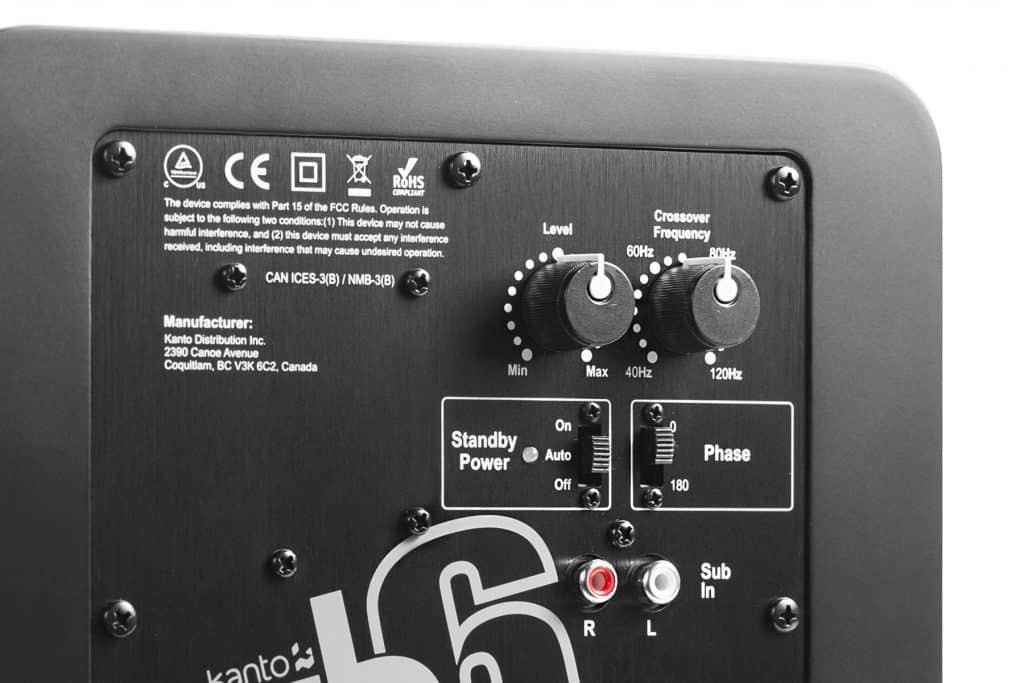
There are two types of subwoofer crossovers: passive and active. While both can effectively serve their required purpose, the differences between passive and active subwoofer crossovers make them appealing to different types of listeners.
Passive Subwoofer Crossovers
Passive crossovers, unlike their active counterparts, don’t require an additional power source in order to mitigate the frequencies.
Passive crossovers run on the power derived from the audio signal that passes through. Passive crossovers are commonly used in car stereo systems, as they require little maintenance.
Most drivers are never aware or never consider the crossover frequency of their car’s audio system.
Passive crossovers are good for regular use, but they don’t offer the freedom to make frequency adjustments that draw some to active crossovers.
If you’re not equipped or interested in making micro-adjustments to the crossover frequency, then a passive crossover is probably the right choice. Because they’re powered by the audio signal, they can effectively be installed and forgotten.
Active Subwoofer Crossovers
Active crossovers are uncommon compared to passive ones. Part of the reason for the active crossover’s scarcity is that they’re more expensive and require a ground wire for power.
The benefit of active subwoofer crossovers, however, appears in the ability to control the crossover frequency.
Unlike the passive ones, active crossovers allow each individual element –or driver–of the system to have its own amplifier, as well as its own channel. This allows for more creative freedom to adjust the levels and, thereby, the sound quality of the audio.
Active crossovers are generally used by musical professionals and enthusiasts. Most listeners outside of this category don’t find that the additional freedom to adjust the crossover frequency justifies the extra cost, power consumption, and installation effort that active crossovers demand.
How To Install Subwoofer Crossovers
Installing a subwoofer’s crossover is a relatively simple process, although it does require a little bit of technical know-how. Here’s what you’ll need to know in order to effectively install either an active or passive crossover into your stereo system.
How To Install A Passive Crossover
- Connect the speaker to the passive crossover’s input
- Attach the subwoofer to the passive crossover’s subwoofer output.
- Connect the mid and high-range drivers and tweeters to the crossover’s respective outputs to create a full range of sound.
How To Install An Active Crossover
- Mount the active crossover. Make sure the mounting is secure and within range of the amplifiers, if possible.
- Place the crossover out of the way if the crossover is being installed into a vehicle. Be sure that it’s securely fastened where it is so that, in case of a crash, it doesn’t break free and add to the danger.
- Prepare a power source as active crossovers require one, therefore installing them demands some wiring. Twelve volts are required, which can be drawn from a wall line or car battery if the crossover is being installed in an automobile. Once the crossover has been mounted and its power source has been secured, the next step is signal wiring.
- Connect the crossover to the receiver using RCA patch cables. Make sure that these cables are kept away from noise sources, such as power cables, vehicle headlight or tail light wires
How To Set Your Crossover Frequency
Setting up your speakers to transfer the proper frequencies to the subwoofer is crucial to the end-product sound quality. The proper frequency for a subwoofer crossover depends on the size and range of the speaker or sound system.
If the original speaker has a wide frequency range, it won’t need to cross over to the subwoofer until the frequencies reach the extreme-low registers.
Small Speakers
If you are using wall-mounted satellite speakers or small surround sound units, the crossover to the subwoofer should be set at 100-150 Hz. These small speakers have a steep drop-off in bass output.
If you set your subwoofer too low, you will notice a prominent mid-bass “suck-out” in your music which will make music and movies sound distorted and unnatural.
Medium-Sized Speakers
Mid-sized floor or bookshelf speakers should have a subwoofer crossover set around 80-100 Hz. While they may be able to go lower, medium-sized speakers will not provide the effortless quality of midbass that a subwoofer can give you.
Taking the strain off your mid-sized speaker’s woofer will give you better upper-bass and midrange sound.
Large Speakers
Large-centered speakers–which can include floor, bookshelf, or high fidelity units–should have a subwoofer crossover set between 40-80 Hz, depending on the size of the speaker’s center and its range quality. Experiment to see which settings work best for you.
Tower Speakers
Tower speakers will often have subwoofers built into them. Some do not require crossovers at all. If your tower speakers do require subwoofer crossovers, the frequency should be around 40-60 Hz.
Some speakers, such as full-band tower speakers, have such a wide frequency range that they don’t require the assistance of subwoofers. Speakers like these come with woofers built into the speakers themselves.
Larger woofers mean that the speakers have the capability of hitting lower registers without sounding buzzing or relying on a secondary subwoofer.
Home Theater Crossover Frequencies
The sound systems used in home theaters, especially modern ones, frequently come equipped with crossovers already in place to mitigate the frequencies. The frequencies required for subwoofer crossovers depend on the specific speaker and what it can handle.
If you have access to your speaker’s specific range, you can safely set your own crossover frequency at roughly 10Hz higher than the lowest register your speakers can produce with quality.
Car Stereo Subwoofer Crossover Frequencies
Most modern cars come equipped with crossovers already installed. However, if your crossovers are not functioning or you want to replace passive crossovers with active ones, it’s important to know what you need for a car and how it’s different from a home theater.
Most automobiles’ stereo systems consist of speakers between 3.5-5.25 inches (8.9-13.3 cm), according to J.D. Power.
The small size of standard car system speakers means that factory stock systems provide a relatively weak bass presence. This is why playing bass too loud in the car tends to blow out speakers faster than playing it on a home system.
This problem can be solved with the addition of subwoofers, which are usually housed in the trunk of the car.
Once the speakers have the ability to share the bass frequencies with the subwoofers, using either passive or active crossovers, you can then adjust the crossover frequency to your preference.
The recommended crossover frequency for vehicle speaker systems is 70-80 Hz.
What Is the Best Hz for Bass?
While 80 Hz is the standard crossover frequency for bass, some listeners may wish to set their crossovers lower. At the 80Hz frequency, bass and sub-bass frequencies are given priority over the upper and mid-range frequencies. This will allow for a full, rich bassline melody to be carried.
However, many listeners enjoy music with extra oomph on the bass and sub-bass. This is a more common practice with hip-hop and other musical genres that rely more heavily on bass and rhythm than upper register melody.
The powerful, floor-shaking bass lines and heavy kick drums that many fans love occur mainly in the sub-bass band, starting around 60 Hz and ranging down as far as 20 Hz.
For home theatre stereo systems, where too much bass may disrupt the content, THX recommends 80 Hz. If you notice buzzing or crackling in the lower registers while using your stereo system, however, you may need to adjust the crossover to suit your individual unit.
Conclusion
Subwoofer crossovers are crucial to the way people listen to music in the modern day.
While most crossovers used in daily life, such as are present in modern car audio systems, are passive and require no adjustment, the use of active crossovers allows for greater freedom of sound quality.
Active subwoofer crossovers can be used to modify the crossover frequency in order to block or boost bass and sub-bass frequency bands. The recommended standard crossover frequency for bass listening is 60-80 Hz.
Sources
- Crutchfield: How to choose a crossover
- Denon: Recommended Crossover Frequency for a Subwoofer
- J.D. Power: How To Set Crossover Frequency For A Car Audio System
- Lifewire: Does Your Car Stereo Need a Crossover?
- SV Sound: Tips for Setting the Proper Crossover Frequency of a Subwoofer
- Teach Me Audio: Audio Spectrum Explained
